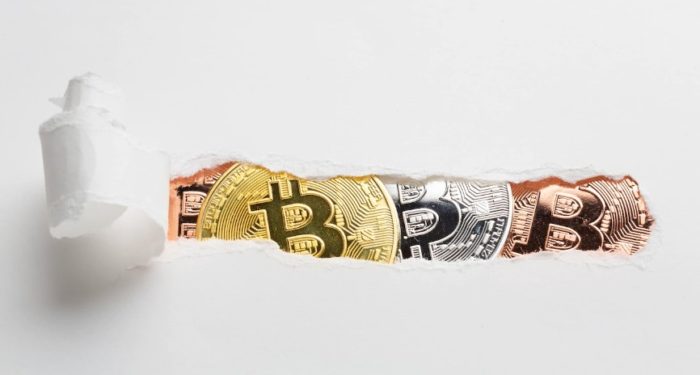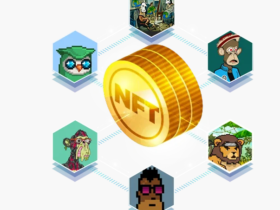Are you shilling a cryptocurrency or NFT? What does shilling in crypto mean?
The question is often asked by newcomers to the crypto space who are unfamiliar with all the jargon. This article will explain all that to you.
As a starting point, we’ll examine shilling history and its meaning in regards to NFTs and cryptocurrencies. Afterward, we will discuss the differences between shillings and crypto promotion.
Our next topic is how to avoid being a victim of shilling and market your NFTs and crypto without sounding like a shill.
The History of Shilling
The Shilling is considered an early American coin now considered historical. For casinos, the word has a completely different meaning.
In casinos, people are often employed to pretend to win a lot of money, so spectators think they too can win. The casino gains more profit by making people lose more than they win since most people lose more than they win.
It is commonly called shilling when actors are hired to motivate onlookers to make a purchase.
Magic shows, television shows, and other fields also use shillings. An organizer of a show often arranges a manufactured audience that applauds or laughs at certain remarks, encouraging the rest of the crowd to do the same.
The shilling technique leverages crowd psychology to induce positive responses since many people are easily influenced by the pack mentality.
A New Era in Shilling; Facilitated By The Internet
Social media platforms such as Facebook and Instagram make connecting with people much easier than ever before. In order to write a positive review of a product or service, companies often pay influencers a fortune. A product or service that is endorsed by an influencer is more likely to be purchased by those followers who trust the influencer’s endorsement.
When an influencer shares their honest opinion about something, it wouldn’t be considered shilling. However, they often fabricate their reviews for the benefit of their sponsors.
A Brief Guide to Cryptocurrencies and Shilling NFTs
Let’s say Shillcoin is a cryptocurrency. There is a $1 price on it right now.
Some people are predicting that Shillcoin is the future of cryptocurrency. They own some Shillcoins, and if the price rises to $2, they can sell them for a profit.
Perhaps the only reason they’re telling you and others that Shillcoin is great is that they benefit if the price gets driven up.
Basically, that’s how cryptocurrency and NFT shilling work.
In a nutshell, Shilling is when someone subtly endorses a cryptocurrency or an NFT in order to gain financial incentives.
A Six-Step Guide To Crypto And NFT Shilling
Promoting the project to get people to invest is the goal. Investing in Shillcoins and NFT or purchasing them increases demand. Cryptocurrencies/NFTs are perceived to be worth more as demand increases.
The higher perceived value causes the price to rise, creating an economic bubble driven by speculation. Unfortunately, people are too emotionally invested in the purchase to notice that – so they continue to buy.
Cryptocurrency shills sell their coins/NFTs just before the bubble bursts, profiting from the inflation. Tokens and other cryptocurrencies are worthless after the bubble bursts.
Crypto Shillings: Are they legal?
At the moment, crypto shilling isn’t regulated. Shilling, in general, is illegal according to many jurisdictions, regardless if cryptocurrencies or NFTs are involved.
In that sense, crypto shilling does not comply with the law.
The Arrest of “Crypto King”: A Story about Crypto Shillings
It was John David McAfee who invented the first commercial anti-virus software. His company, McAfee Associates, was sold to Intel for $7.68 billion in 1998. By 2020, the SEC arrested and sued the cybersecurity software developer for promoting ICOs (Initial Coin Offerings).
In total, he made $23 million by shilling eight ICOs. A lawsuit alleges that McAfee misrepresented itself as an investor or technical advisor while recommending various ICOs to investors.
As a result of the ICO hype man’s false claims, those companies believed they were able to get his technical assistance, and he gave them the impression he was investing his own money. He disguised his tweets as unbiased investment advice, but they were essentially paid promotions.
In response to being outed by the press, McAfee allegedly pumped his own worthless ICO coins to cash out. An SEO alleged that he encouraged investors to buy tokens but did not disclose the fact that he was also trying to sell his own.
Here Are Some Key Takeaways:
Because of McAfee’s background, people trusted his technical expertise. Because he built a multibillion-dollar company, he was able to label his endorsement of those cryptocurrencies as “friendly investment advice.”
In order to reach the people, he used social media (specifically Twitter).
McAfee managed to sell off his worthless cryptocurrency after investors bought it, even after the media outed him.
Does Promoting A Crypto Or NFT Equate To Shilling?
No, definitely not. It is common for people to confuse cryptocurrency and NFT promotions with shillings, even though they have very different purposes.
By exploiting herd mentality, shills lure people into investing in tokens at inflated prices, so they can profit when the bubble bursts. Because shills know people will catch on eventually, they plan an exit strategy.
True cryptocurrency and NFT advocates, however, are in it for the long haul. Their endorsements are neither pretentious nor deceptive, unlike those of shills. If they have any financial incentives in a project they’re involved with, they always disclose them.
It’s always the shills who will be the loudest in a room full of crypto and NFT enthusiasts blabbering on about the “next big thing”.
Crypto/NFT proponents won’t try to trick you into buying something. That’s how you can identify them.
Crypto Or NFT Scams: What Should You Watch Out For?
Crypto or NFT shills can be difficult to spot because they are often very cleverly crafted. Despite that, you’d want to take note of a few red flags:
Shills Masquerading As Influencers
We don’t mean to say that all cryptocurrency influencers are shills. It is certainly true that there are many genuine investors giving impartial investment advice based on their beliefs.
If a celebrity suddenly starts talking about how there’s going to be a boom in the price of “x” coin, it’s best to remain vigilant; no matter how credible they sound. In all likelihood, their endorsement is paid, they don’t know anything about the project, and their enthusiasm is fake.
Here’s how you can spot them: If a prominent public figure starts recommending a particular cryptocurrency or NFT out of the blue, encouraging their followers to buy it before it disappears, run.
The Over-Enthusiastic Businessmen
The crypto space is often taken advantage of by people who are exceptional marketers in other fields. Regardless of whether they have technical expertise, they’ll invest in a token and encourage others to follow suit. Influential business people would sell their holdings once the price has risen sufficiently.
Almost immediately, the market would crash because the exit of the businessman would lead those who previously backed the dream to abandon it before it was too late – unaware it had already been too late. As a result, the new investors will be left holding worthless tokens while the businessman gets to enjoy their vast profits.
Here’s how you can spot them: Businessmen who emphasize how the cryptocurrency of their “choice” can make you rich rather than discussing its technical aspects or fundamental functions. This is always a sign that they’re exploiting greed. Many of these shills are professionals in the investment and entrepreneurship fields.
Team Members and Founders who are Overly Zealous
The passion they have for their project is natural. It would be a red flag alone if the founding members seemed unenthusiastic.
However, in an attempt to attract new customers and investors, they may overdo the marketing and hype up the company. Marketing gimmicks may not be as harmful as fake endorsements, but they can easily lead to overselling their project to those unfamiliar with crypto or NFTs.
The best way to spot them: When the team promises the moon without a clear product roadmap to back up their claims, something is wrong. If you can’t see progress for yourself, be skeptical of all promises.
Shilling: How to Avoid Being Victimized
It is impossible to avoid scams in the crypto industry without the correct information, as it is entirely unregulated. Understanding scams and cryptocurrencies will give you a better chance of staying safe.
Below are some tips to assist you further. Keeping these in mind and exercising good judgment should keep you from getting into trouble.
Do Your Own Research: Before considering investing in a token, you should first do your own research. Listen to what the experts have to say and find out all you can. A website with no other content than too-good-to-be-true endorsements is probably not worth your time.
Do not fall victim to the YOLO or FOMO rhetoric: The first refers to You Only Live Once, while the second refers to Fear Of Missing Out. There are nine lives for cats and one life for us, but neither of those lives is worth wasting on fraudulent schemes. Regarding FOMO, it’s better to arrive late at a party with winners than to arrive early at a party with losers.
Authenticity and background check: Determine whether the person endorsing the token has some stake in the project. The previous history of their involvement in the crypto space can shed some light on that; however, it is impossible to check directly. There is a possibility that the endorser is not involved with the cryptocurrency project if they have never worked on any before.
World-famous musicians don’t necessarily know about crypto: Just because someone is famous doesn’t mean they are knowledgeable about cryptocurrency. Furthermore, if they claim to be offering their honest opinion on a cryptocurrency or NFT, it could be they’re being paid to do so without acknowledging it. You should, however, do your own research in this case.
NFTS and Crypto Promotion Without Coming Off as a Shill
Promotion on social media relies heavily on personal connections. The crypto community is, however, extremely wary of con artists, so you must also avoid the common traits of shills.
In other words, don’t promise the world or oversell your products. You will be called out on that sooner or later, regardless of whether you meant to fool anyone.
In order to be effective, it is better to give more than you take. To educate people about NFTs and cryptocurrencies, you can publish insightful content. Your products will be easier to sell in the long run once you establish yourself as a crypto and NFT expert.
Social media platforms can be used to connect with people in the following ways:
Establishing a niche community: You can connect with your target audience by creating a niche community. You would have an engaging, low-maintenance audience after the first few thousand members since the community would grow itself.
Streaming Live: Share your insight on recent trends in the crypto space and observations you have made regularly on live streams. As a result, people will consider you to be more credible and knowledgeable.
Ask Me Anything (AMA): During an AMA, viewers may ask any question related to the topic. A weekly Ethereum AMA session, for example, can allow people to ask you questions about Ethereum. Engaging your audience in this way is a great way to establish a relationship.
Where to Advertise Your NFT or Cryptocurrency: Top 7 Recommendations
#1 – Facebook and Instagram
Social media promotions are neither new to Facebook nor Instagram. You should, however, avoid a one-size-fits-all solution.
Niche communities can be leveraged on Facebook, where everyone has a common interest. The first thing you should do is join a few cryptocurrencies and NFT-related Facebook groups.
Be active in the discussion, and be helpful to others, but don’t constantly advertise your NFT or cryptocurrency – that’s easy to do. It would be better to make a post describing your offering and answering the questions honestly if the group rules allow it. People will contact you on Messenger if they’re interested.
Regarding Instagram, it’s best to use a content marketing strategy. Regularly publish insightful and valuable content related to your niche. To build an audience of active and engaged potential customers, take full advantage of Instagram Stories and hashtags.
#2 – Twitter
Retweets and hashtags are a great way to spread the word about NFTs and cryptocurrencies on Twitter. Twitter is easier to form meaningful connections with essential personalities than other social media platforms because it is not looked down upon by the movers and shakers of industries.
There are, however, relatively high standards here as well. To build a following, you must publish tweets that add value to people’s lives before promoting your product.
Twitter is full of ‘nobodies’, and no matter how intriguing their posts are, no one listens. It’s important to start by building your authority so you can become somebody.
#3 – Reddit
Wall Street had a hectic week last year when Redditors pumped up GameStop’s stock. There’s no denying that Reddit is a platform with great potential; whether it was fair for everyone or not is open for debate.
A cryptocurrency or NFT can go viral on Reddit as long as your marketing strategies are on point. There are plenty of subreddits (Reddit communities) dedicated to cryptocurrency, such as r/cryptocurrency.
#4 – Discord
Among crypto enthusiasts, Discord is another popular messenger app. It’s fairly easy to promote and sell cryptocurrencies and NFTs here due to the abundance of crypto-related servers and communities. The same is true for Telegram, where you can build a loyal following and monetize it later.
#5 – Telegram
The Telegram platform is also a great way to promote NFT and other crypto-related products. With Telegram channels, you can broadcast your messages to 200,000 users per group, making it one of the best messenger apps for reaching a large audience.
To talk about your NFT or cryptocurrency, you can use a number of cryptocurrency-related channels. It’s not only feasible to join existing channels, but it’s also easy to establish your own.
#6 – Websites
Let’s not forget your website. Specifically, your website’s blog section.
Content marketing based on SEO is often underestimated by creators, even though it produces wonderful results.
The basic concept is to publish informative articles about a particular niche. In the case of music NFTs for instance, your website should cater to that niche. By promoting your products on the website, you can monetize traffic after it’s become an authority website in the niche.
You won’t see results overnight, but the wait will be well worth it.
#7 – NFT Marketplaces
Despite the great benefits of social media platforms as a tool for connecting with your audience, you need to conduct transactions elsewhere. Alternatively, NFT marketplaces save you this hassle since you can advertise your tokens to potential buyers who are already interested in NFTs, and they won’t have to switch websites to do it.
OpenSea, Rarible, and Nifty’s are some of our favorite marketplaces. NFT marketplaces are highly recommended if you want to try your luck.
Final Words
We’ve read a lot so far, so let’s review.
Here, we’ve learned about the history of shillings and read a case study about that term in the crypto space.
Following that, we examined how crypto/NFT shilling and promotions differ, as well as how to avoid falling for a shill.
Last but not least, we examined how to promote your works as an NFT/crypto creator without seeming overly promotional.
Hopefully, this article answered all your questions about crypto shilling. You can learn more about cryptocurrencies by visiting our website!











Leave a Reply